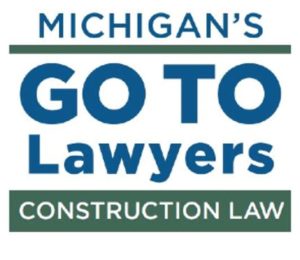What is the effective date of the Families First Coronavirus Response Act (“FFCRA”)?
The DOL has indicated the effective date for FFCRA is April 1, 2020, and the paid leave provisions only apply to leave taken between April 1, 2020 and December 31, 2020. According to what we’ve seen from the Department of Treasury, leave provided before April 1 will NOT be eligible for offsetting tax credits.
Do workers who cannot work due to the Governor Whitmer’s Shelter-in-Place Order qualify for paid sick leave pursuant to the FFCRA?
Neither the Federal government nor State of Michigan has provided official guidance on whether the Governor Whitmer’s Shelter-in-Place Order is considered a State quarantine or isolation order related to COVID-19. We believe it is, but know that there are other law firms who have taken exception to that conclusion. If we’re wrong, then unless workers have another qualifying reason to be off work besides the Governor’s order – and there are several, such as caring for a child whose school is closed, or being quarantined by the health care clinician – they (and their employers) will receive no benefit under the federal legislation when laid off due to the Governor’s Order. If we’re right, workers who cannot work due to the Shelter-in-Place Order and who are not exempt from that Order based on their and/or their employer’s work must be given paid sick leave pursuant to the FFCRA starting April 1, 2020.
How does an employer ensure it qualifies for the tax credit pursuant to the FFCRA?
Employers cannot provide paid sick leave pursuant to the FFCRA until April 1, 2020. Employers cannot claim the tax credit for any paid leave provided prior to April 1, 2020. The specific procedure to claim the tax benefit will be the subject of a later Legal Bulletin.
If an employer provides its employees extra leave prior to April 1, 2020, does this count towards the required two week paid leave pursuant to the Emergency Paid Sick Leave Act?
No, the Emergency Paid Sick Leave Act imposes a new leave requirement on employers that is effective beginning April 1, 2020.
What’s the difference between a “temporary leave” and a “termination of employment”?
A temporary leave is a temporary cessation of work, which occurs when an employer reduces or stops an employee’s work without terminating the employment relationship. Termination of employment occurs when the employment relationship ends.
The State of Michigan is strongly encouraging employers to place employees on temporary leave/layoff and to advise the employees that work is expected to be available within 120-days as opposed to terminating their employment entirely. Employees remain eligible for unemployment benefits either way. The employer must be careful when putting workers on temporary leave not to create a contractual obligation to bring the employee back to work by making promises that cannot be kept. Under the Governor’s Executive Order 2020-10, it is still important for employers to register with the UIA if they want to waive the “search for work” requirement for their employees – a waiver that can help increase the likelihood that your workers will not seek and secure other employment and elect not to return when you are able to recall them.
Do we have any notice obligations if we are cutting more than a third of our workforce or shutting down an entire business location during this period?
You may. Depending on the scope and nature of the action the employer takes, you may trigger obligations under the Worker Adjustment and Retraining Notification Act (“WARN”). WARN requires an employer provide certain notices to employees and the State if a qualifying layoff occurs. Whether this notice is required depends on the magnitude of the layoff – both the number of workers impacted and the percentage of the workforce can be factors – and its duration. If you have more than 100 employees or are laying off more than 50 workers, we encourage you to speak to an employment attorney to determine what notice obligations may be triggered by any layoffs.
How can an employer obtain copies of the model notice from the DOL concerning FFCRA rights?
Here is the link for the Notice for non-federal employers:
https://www.dol.gov/sites/dolgov/files/WHD/posters/FFCRA_Poster_WH1422_Non-Federal.pdf
Employers also may contact the Department’s Wage and Hour Division at 1-866-4-USWAGE (1-866-487-9243) or find and print the notice themselves from https://www.dol.gov/agencies/whd/posters.
Where must employers post the notices concerning the FFCRA?
Employers must post a notice of the FFCRA requirements in a conspicuous place on its premises – generally the same place as all of your other mandated employment notices are located. An employer also may satisfy this requirement by emailing or direct mailing this notice to employees, or posting this notice on an employee information internal or external website.
When will the DOL start enforcement actions for Families First Act?
The DOL will not bring enforcements against any employer for violations of the FFCRA through April 17, 2020, provided the employer made reasonable, good faith efforts to comply with the FFCRA. An employer who is found to have violated the FFCRA will be deemed to have acted reasonably and in good faith if they do all of the following:
- The employer remedies any violations as soon as practicable.
- Violations are not considered “willful” (generally considered “willful” if the employer “either knew or showed reckless disregard for the matter of whether its conduct was prohibited…”).
- The employer sends the DOL a written commitment to comply with the FFCRA in the future.
We will continue to monitor new developments and work to keep you advised as new or corrected information becomes available. If you have any questions, please contact a member of the Rhoades McKee COVID-19 Legal Response Team.
More Publications



